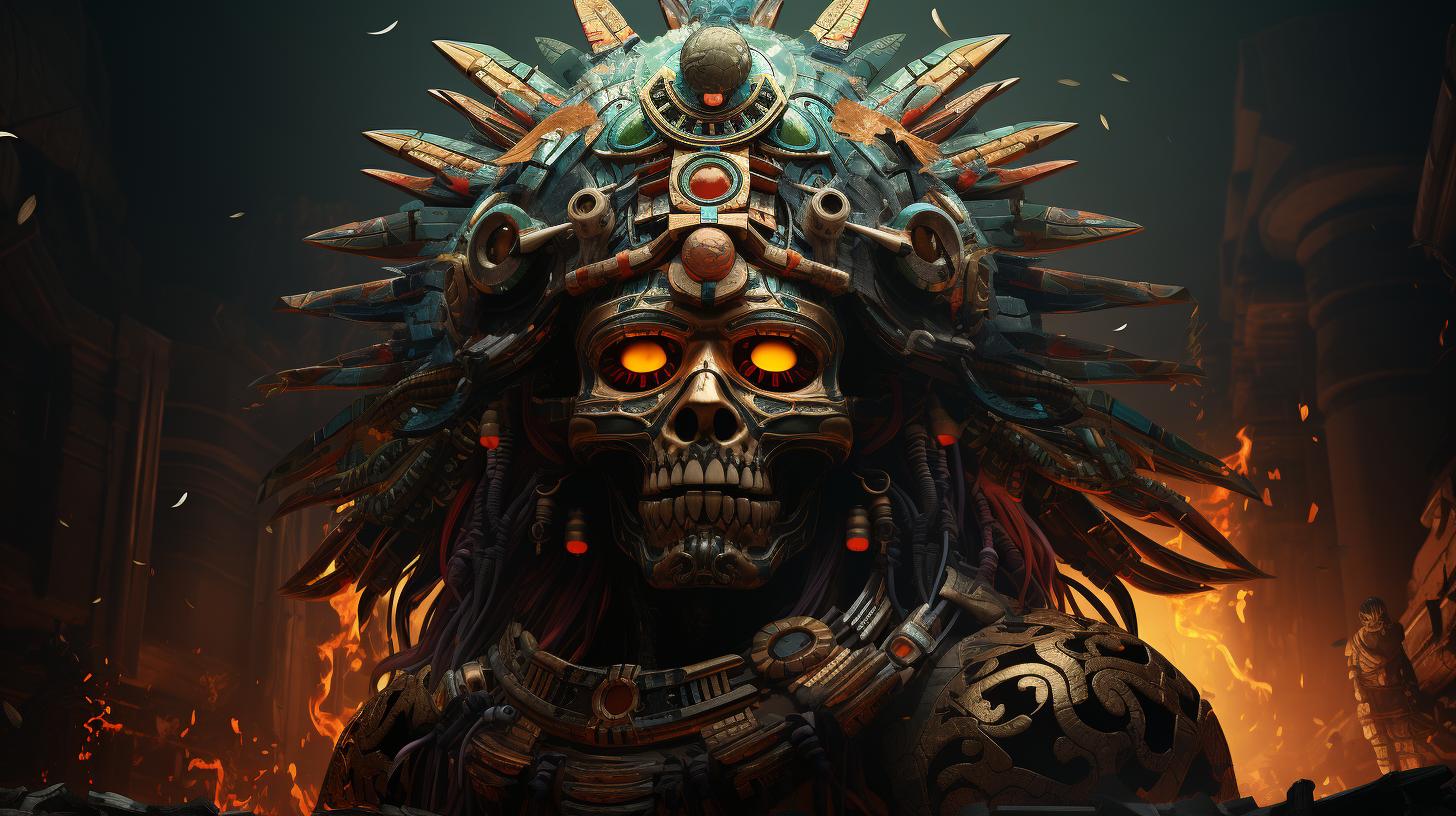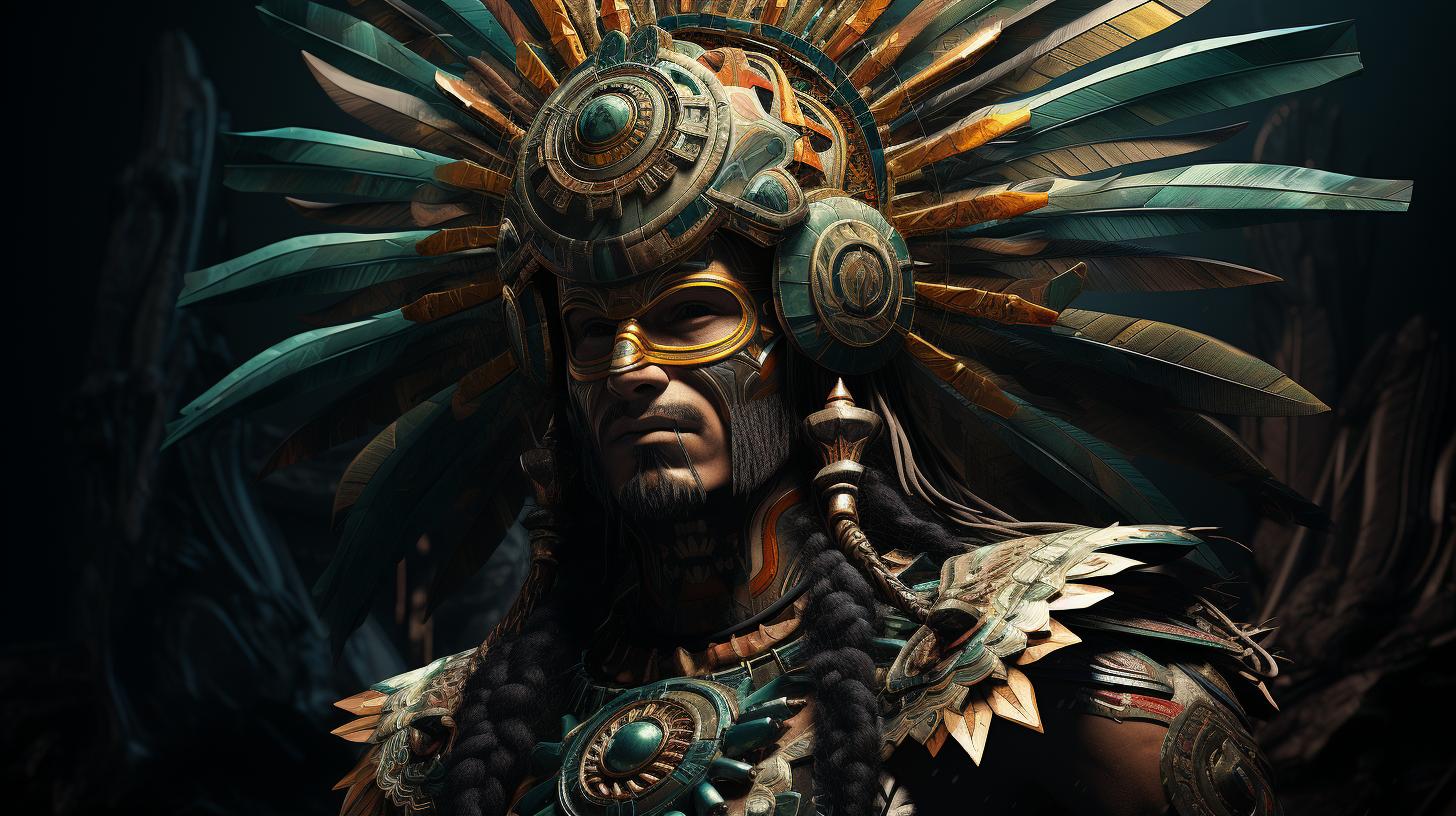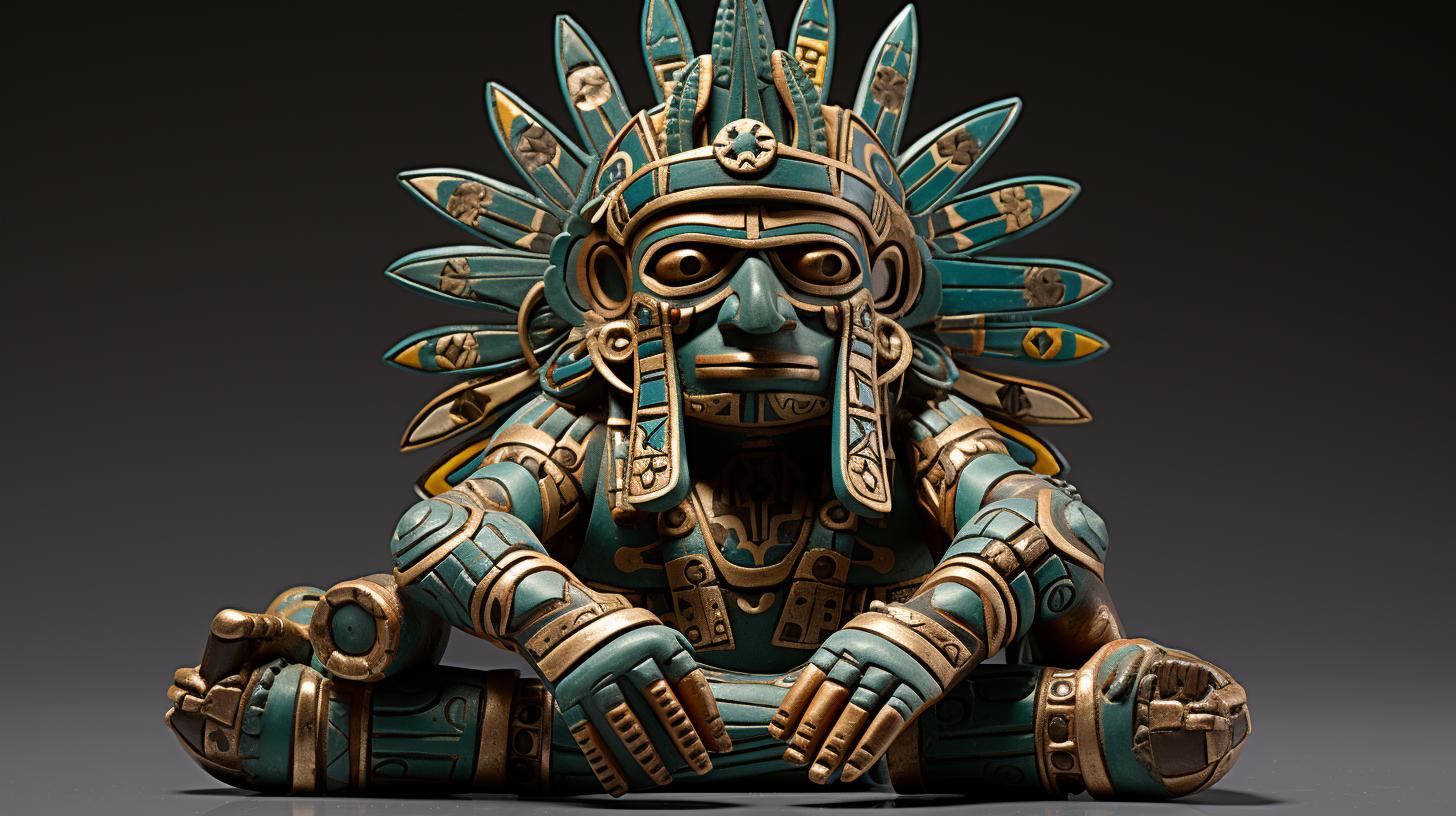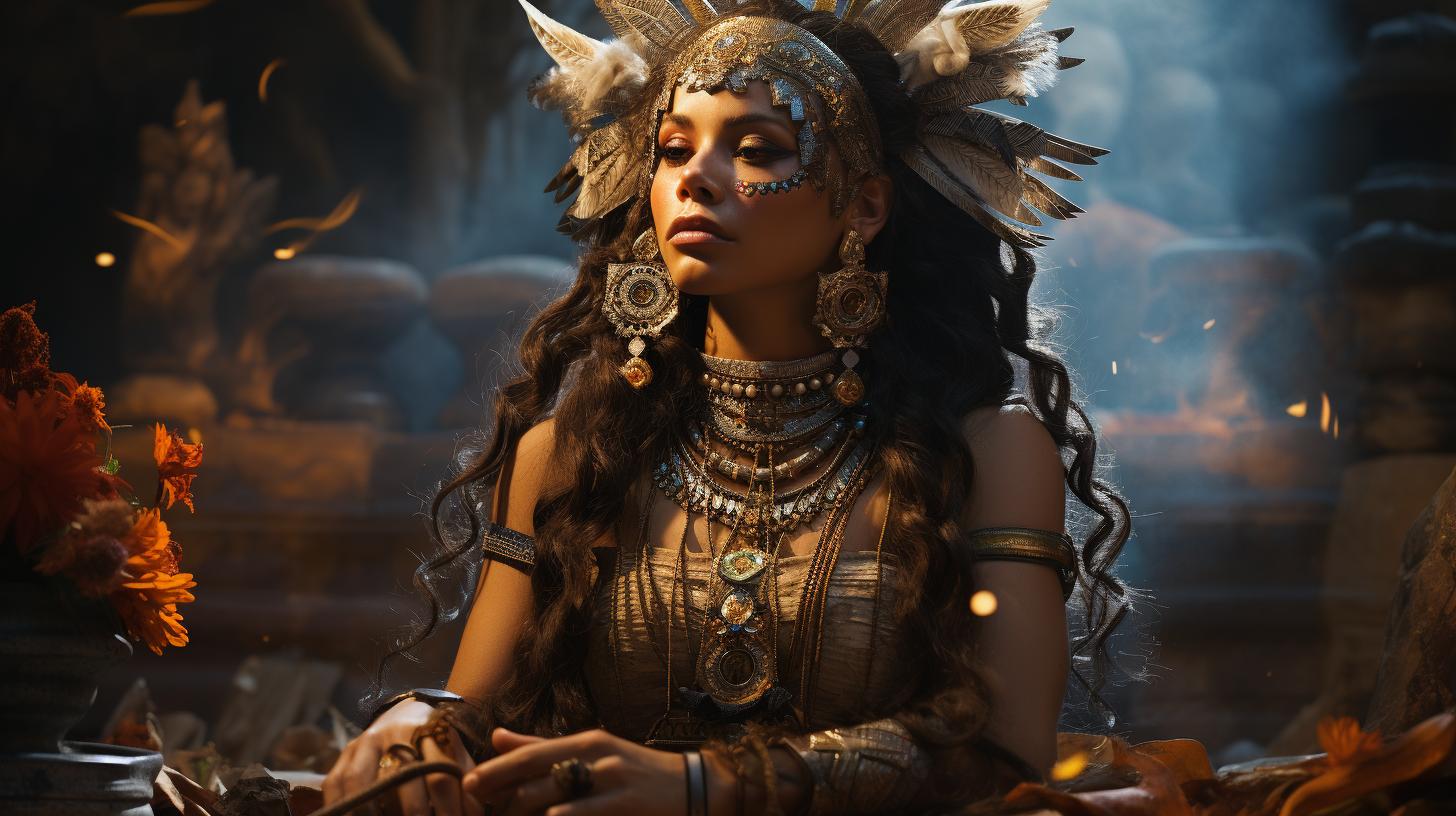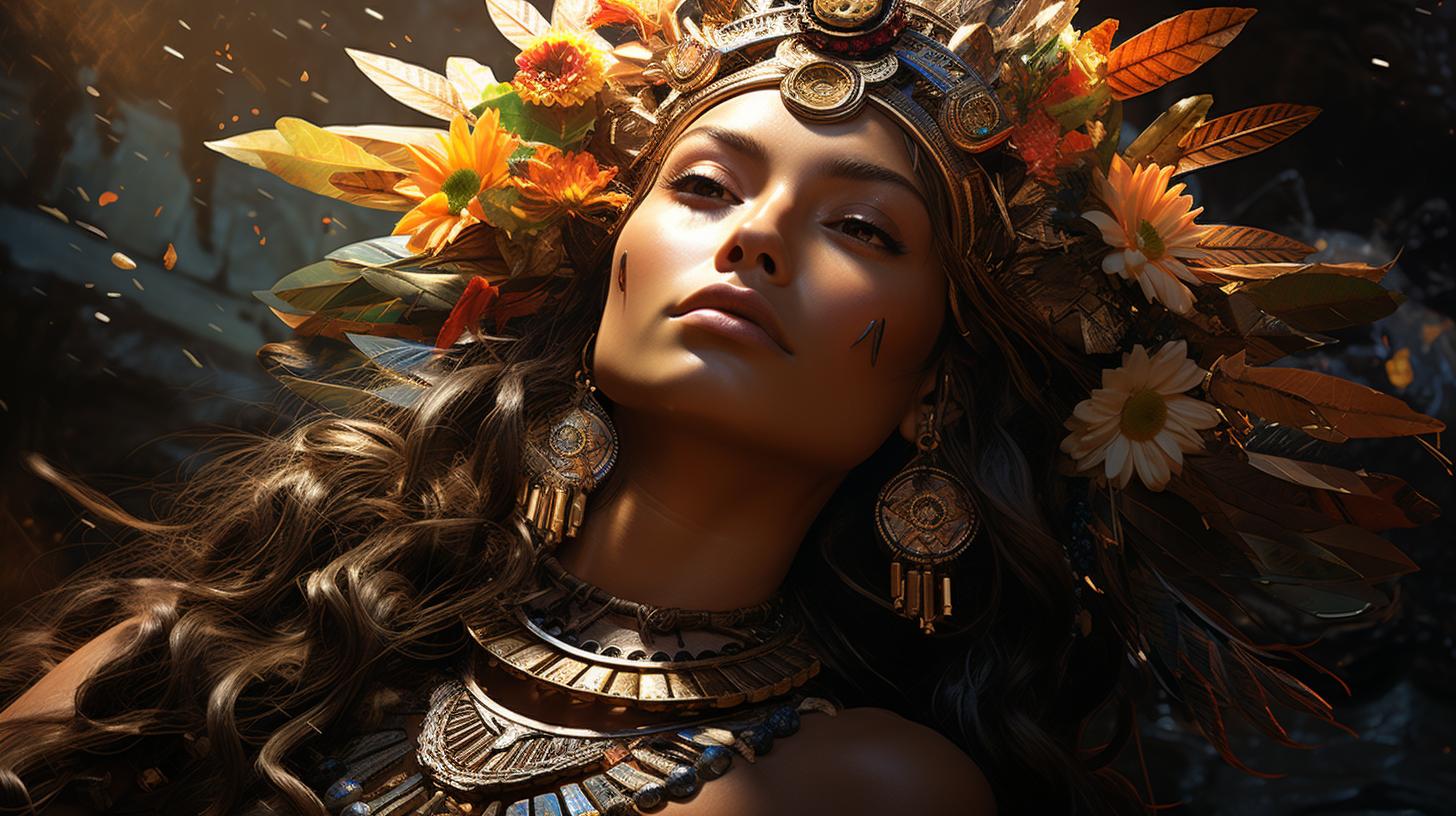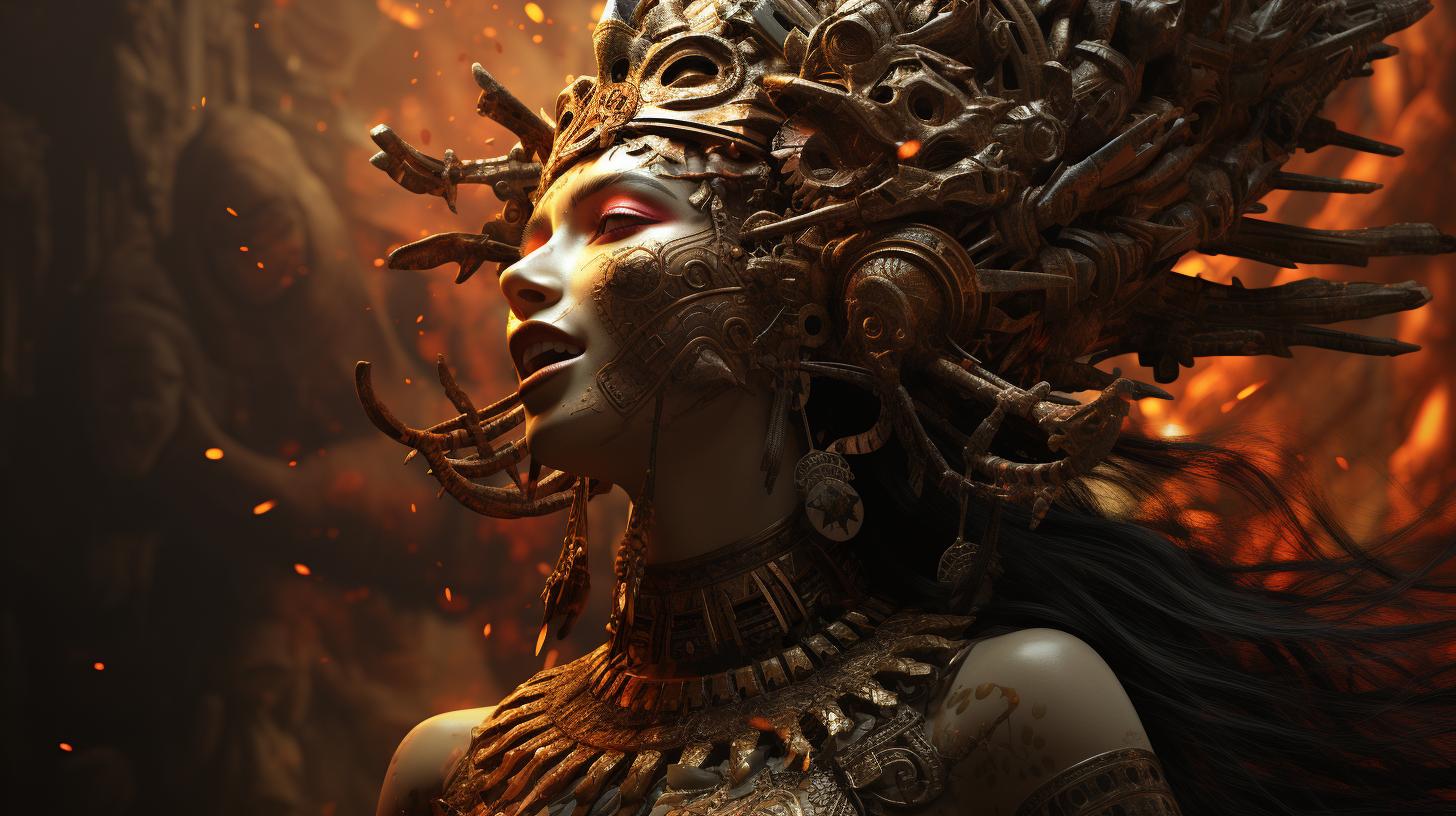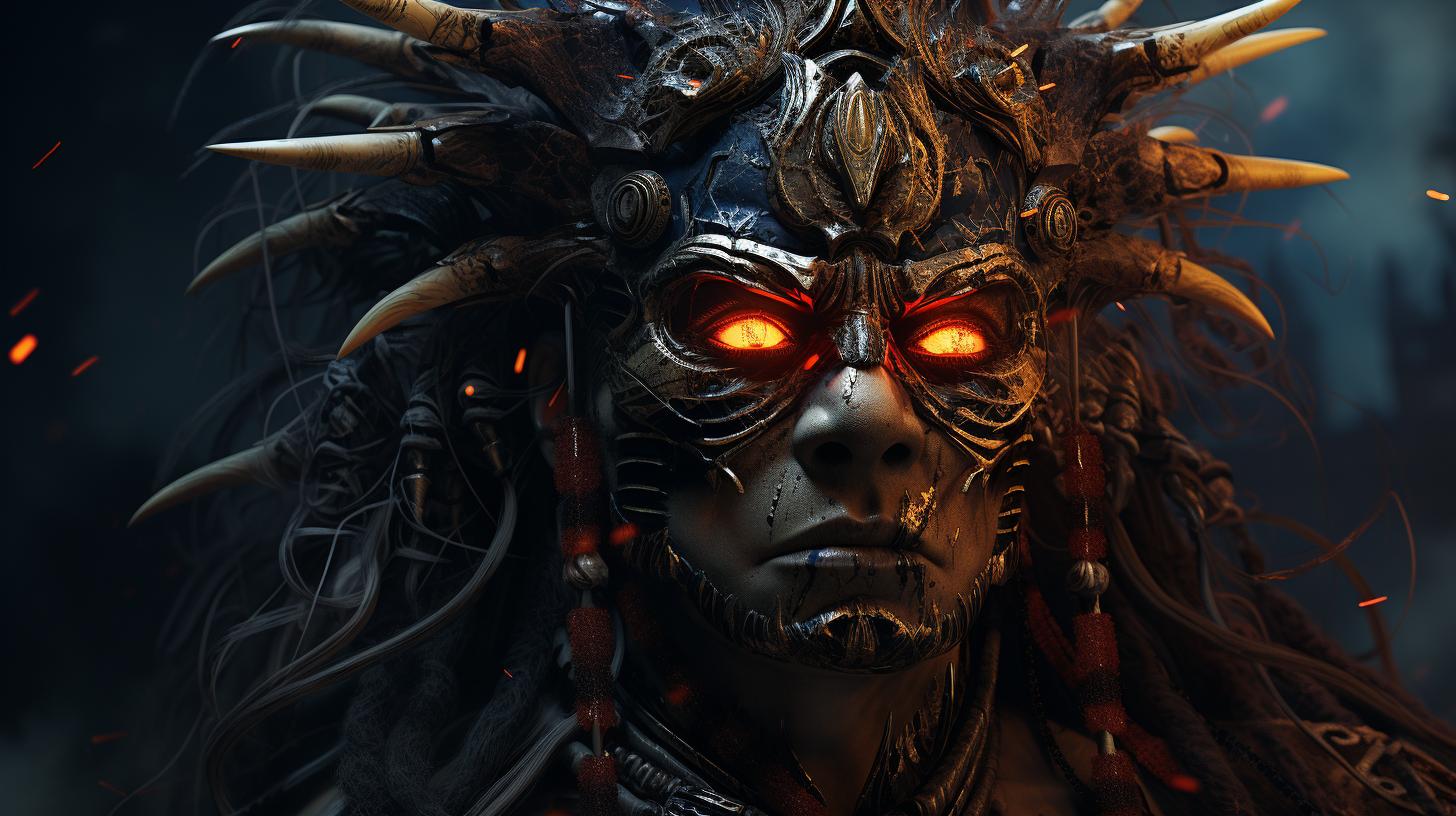Piltzintecuhtli: The Aztec God of Healing and Vision
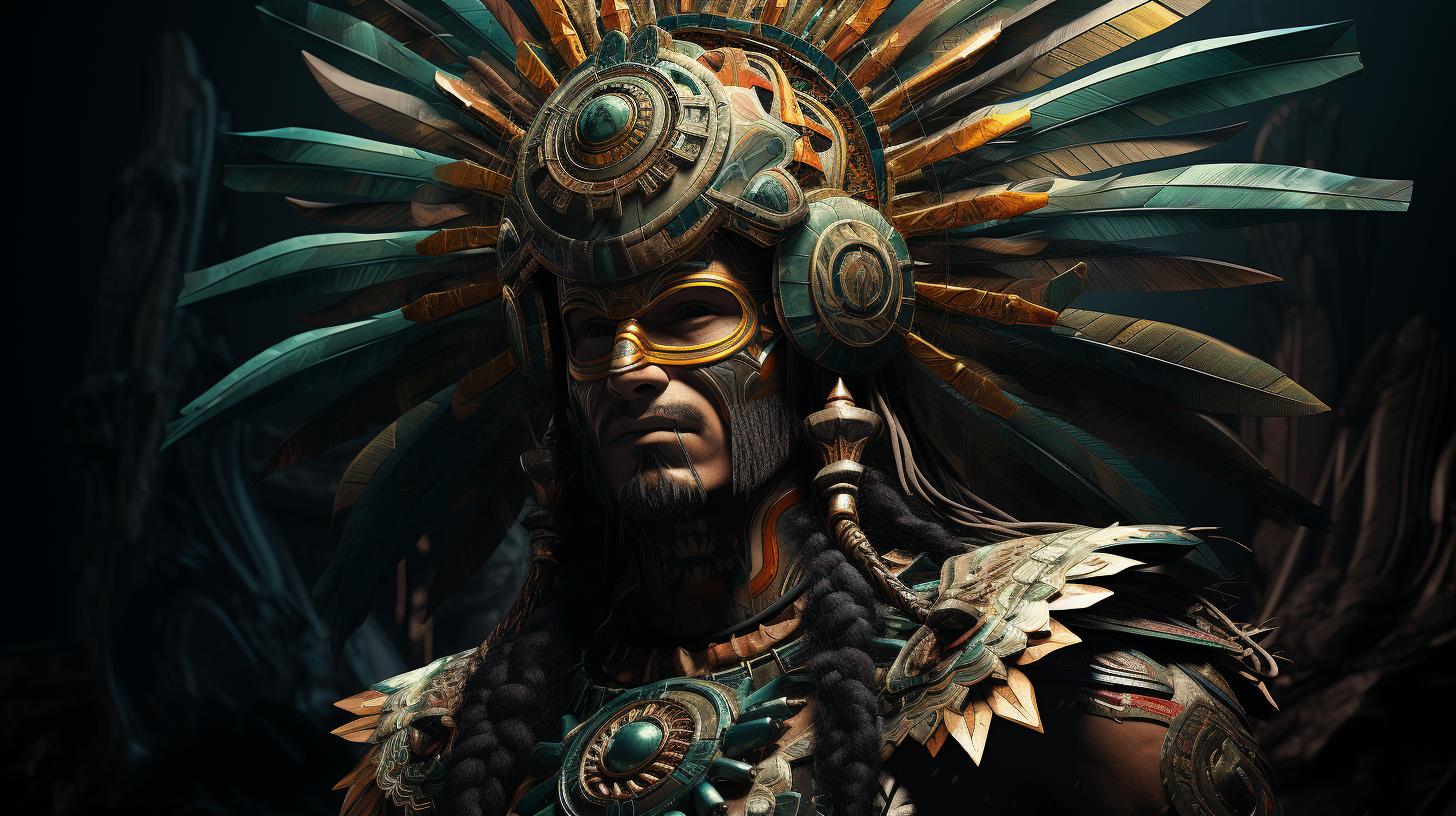
Piltzintecuhtli, the Aztec god of healing and vision, is a significant deity in Aztec mythology. Associated with the sun, he holds the role of the Prince-Lord and one of the nine Lords of the Night.
Piltzintecuhtli’s influence extends to the 27th night of the Aztec calendar. Known for bringing favorable fortune and healing, he is also linked to hallucinatory plants and their spiritual uses. Piltzintecuhtli’s family ties connect him to the first humans created and his marriage to Tlazolteotl, the fertility goddess.
His presence remains felt in Camp Aztlan, particularly in the infirmary where his healers diligently provide care.
Overview of Piltzintecuhtli in Aztec Mythology
Piltzintecuhtli holds a significant role in Aztec mythology, representing various aspects such as healing, vision, and spirituality. This section provides an overview of Piltzintecuhtli’s background, his role as the Aztec god of healing and vision, his relationship with the sun and night, his connection to hallucinatory plants, and his family relationships and descendants.
Background and Origins
Piltzintecuhtli’s origins can be traced back to the creation of the first humans according to Aztec mythology. He is believed to be the son of Oxomoco and Cipactonal, the first humans created.
This section explores the mythical background and origins of Piltzintecuhtli.
Role as the Aztec God of Healing and Vision
Piltzintecuhtli is revered as the Aztec god of healing and vision. This subsection delves into his role in bringing healing and well-being to those who seek him. Additionally, it explores his association with vision and his ability to provide insight and clarity.
Relationship with the Sun and Night
Piltzintecuhtli has a close relationship with the sun and night. This part examines his connection with the sun as a symbol of rebirth and his association with the night as one of the Lords of the Night in the Aztec calendar.
Connection to Hallucinatory Plants
Piltzintecuhtli’s significance extends to his connection with hallucinatory plants. This subsection explores the belief that these plants possess mystical properties that induce visions and altered states of consciousness, with Piltzintecuhtli being revered by those who use them for spiritual purposes.
Family Relationships and Descendants
Piltzintecuhtli’s family relationships and descendants are explored in this section. It reveals his marriage to Tlazolteotl, the fertility goddess, and their offspring, including Centeotl, the god of maize.
Piltzintecuhtli’s Symbolism and Significance
Piltzintecuhtli, the Aztec god of healing and vision, holds deep symbolism and significance within Aztec mythology.
This section explores various aspects of his importance and role.
Representation of Favorable Fortune and Prophecy
Piltzintecuhtli is revered as a symbol of favorable fortune and prophecy. As the Prince-Lord and one of the nine Lords of the Night, his presence indicates what the night he governs will be like.
Camp Aztlan campers and staff seek his blessings for a prosperous future and rely on his guidance for favorable outcomes.
Influence on the Aztec Calendar and Night Number 27
Piltzintecuhtli’s influence extends to the Aztec calendar, particularly in relation to night number 27. As one of the Señores de la Noche, he played a significant role in governing the ninth night of each calendrical cycle.
He shaped the energy and events of this night, symbolizing the balance between darkness and light.
Association with Healing and Well-being
Piltzintecuhtli’s association with healing and well-being is central to his symbolism. As the Aztec god of healing, he brings forth his powers of restoration and rejuvenation. Camp Aztlan’s infirmary resonates with his strong presence, where his dedicated healers tirelessly work to ensure the campers’ well-being and provide healing services.
Spiritual Significance of Piltzintecuhtli
Piltzintecuhtli holds great spiritual significance for those who follow his teachings and beliefs. His connection to the sun, healing, and vision indicates his role as a spiritual guide and mentor. Those seeking spiritual growth and enlightenment often turn to Piltzintecuhtli for guidance and inspiration in their journey.
Piltzintecuhtli’s Iconography and Depictions
Piltzintecuhtli, the Aztec god of healing and vision, is depicted in various forms in Aztec art and codices. These visual representations provide insights into his significance and role in Aztec mythology.
Visual Representations in Aztec Art and Codices
Aztec art often portrays Piltzintecuhtli as a youthful figure adorned with vibrant feathers and adorned with jade jewelry. These representations emphasize his connection to nature, spirituality, and the sun. Some depictions show him holding a healing herb or a ceremonial staff, symbolizing his healing and guiding abilities.
Symbolic Elements: Feathers, Jade Jewelry, and More
Feathers, particularly vibrant and colorful ones, are prominent in Piltzintecuhtli’s iconography. They represent his association with the sun, renewal, and spiritual enlightenment. Jade jewelry, such as necklaces and bracelets, symbolize his connection to the earth and fertility.
Piltzintecuhtli in the Codex Telleriano-Remensis
The Codex Telleriano-Remensis, an Aztec pictorial manuscript, features depictions of Piltzintecuhtli. In this codex, he is shown with elaborate headdresses, feathered cloaks, and adorned with jewelry. These illustrations highlight his status as a divine prince and his role in guiding and healing.
Importance in Aztec Mythological Context
Piltzintecuhtli’s iconography and depictions reflect his importance in Aztec mythology. As the god of healing and vision, his visual representations convey his power to bring well-being and spiritual insight. The vibrant colors, feathers, and jade jewelry in his depictions serve as visual markers of his divine attributes and celestial associations.
Worship and Reverence to Piltzintecuhtli
Piltzintecuhtli, the Aztec god of healing and vision, is revered and worshipped through various rituals and practices. His importance extends to Camp Aztlan, where his presence is deeply felt and revered by both campers and staff.
Rituals and Offerings to Piltzintecuhtli
Devotees of Piltzintecuhtli engage in rituals and ceremonies to honor him and seek his blessings. These rituals often involve offerings of food, flowers, and other symbolic items. Incense is burned to create a sacred atmosphere, and prayers and chants are recited to invoke the presence of Piltzintecuhtli.
Importance in Camp Aztlan
Piltzintecuhtli holds a special place of importance in Camp Aztlan. His healing and spiritual significance resonate throughout the camp, particularly in the infirmary where his dedicated healers tirelessly care for campers.
His presence serves as a source of inspiration and comfort to those seeking healing and well-being.
Devotion Among Campers and Staff
Campers and staff at Camp Aztlan hold a deep devotion to Piltzintecuhtli. They recognize his power in bringing healing and guidance, and they actively engage in practices that deepen their connection with him.
Devotional activities may include meditation, prayer circles, and participation in rituals dedicated to Piltzintecuhtli.
Spirituality and Healing Practices Associated with Piltzintecuhtli
The worship of Piltzintecuhtli is intertwined with spirituality and healing practices. Campers and staff who seek his guidance often engage in spiritual journeys, using techniques such as meditation and visualization to connect with him on a deeper level.
Piltzintecuhtli’s association with healing also inspires the use of traditional and alternative healing modalities at Camp Aztlan.
Influence of Piltzintecuhtli in Modern Culture
In recent years, there has been a resurgence of interest in Aztec mythology, and Piltzintecuhtli has gained attention as a significant figure in this revival. Here are a few notable aspects highlighting Piltzintecuhtli’s impact in modern culture:
Resurgence of Interest in Aztec Mythology
The revival of fascination with ancient civilizations and their religions has brought Aztec mythology, including Piltzintecuhtli, into the spotlight.
People are increasingly exploring and appreciating the rich cultural heritage of the Aztecs.
Piltzintecuhtli’s Representation in Contemporary Art
Artists, particularly those drawn to indigenous cultures, have incorporated Piltzintecuhtli into their works. Paintings, sculptures, and other forms of contemporary art depict Piltzintecuhtli in visually striking and thought-provoking ways, exploring his symbolism and significance in modern contexts.
Impact on Spiritual and Healing Communities
Piltzintecuhtli’s association with healing and well-being has resonated with spiritual and healing communities. His presence in their practices, rituals, and belief systems brings a sense of connection to ancient wisdom and a source of spiritual guidance and inspiration.
Frequently Asked Questions about Piltzintecuhtli
- Who were Piltzintecuhtli’s parents according to Aztec mythology? According to Aztec mythology, Piltzintecuhtli is the son of Oxomoco and Cipactonal, who were the first men and women created.
- What is Piltzintecuhtli’s role in the Aztec calendar? Piltzintecuhtli is associated with the third night and holds influence over the night number 27 of the Aztec calendar, symbolizing his connection to the nocturnal aspects of his domain.
- How is Piltzintecuhtli associated with healing and well-being? Piltzintecuhtli is revered as the Aztec god of healing and is believed to bring good fortune and favorable outcomes.
His association with the sun and his role in healing practices highlight his connection to well-being and restoration.
- What are some notable visual representations of Piltzintecuhtli? Piltzintecuhtli is often depicted in Aztec art and codices adorned with colorful feathers and jade jewelry, symbolizing his divine status and connection to the natural world.
- How is Piltzintecuhtli worshiped and revered in modern times? Worship and reverence for Piltzintecuhtli vary among individuals and spiritual communities.
Practices include rituals, offerings, prayers, and seeking his guidance and blessings for healing and spiritual growth.
FAQs about Piltzintecuhtli
Who were Piltzintecuhtli’s parents according to Aztec mythology?
According to Aztec mythology, Piltzintecuhtli is believed to be the son of Oxomoco and Cipactonal, the first men and women created.
What is Piltzintecuhtli’s role in the Aztec calendar?
Piltzintecuhtli holds an important role in the Aztec calendar. He is one of the nine Lords of the Night and specifically responsible for the third night, which corresponds to the 27th day of the calendar.
How is Piltzintecuhtli associated with healing and well-being?
Piltzintecuhtli is strongly associated with healing and well-being. As the Aztec god of healing and vision, he brings favorable fortune and is revered for his ability to bring wellness and healing to those who seek it.
What are some notable visual representations of Piltzintecuhtli?
Piltzintecuhtli is depicted in various ways in Aztec art and codices. In the Codex Telleriano-Remensis, he can be seen adorned with colorful feathers and jade jewelry, symbolizing his importance and influence.
How is Piltzintecuhtli worshipped and revered in modern times?
In modern times, Piltzintecuhtli continues to be honored and revered. His worship may involve rituals and offerings to show devotion and seek his guidance, particularly in spiritual and healing communities influenced by Aztec traditions.
These frequently asked questions provide insights into different aspects of Piltzintecuhtli, shedding light on his parentage, his role in the Aztec calendar, his association with healing and well-being, notable visual representations, and his significance in modern worship practices.
Exploring these FAQs allows for a deeper understanding of this revered Aztec deity and his enduring presence in both ancient and contemporary cultures.
.

